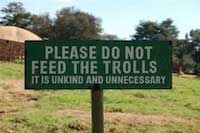These people are as ill-informed as the bashers wh
Post# of 43066

Queanbeyan council raises concerns about impact of Foy plastics plants on nearby residents
The Queanbeyan-Palerang council has raised concerns about the planned plastics-to-fuel factory at Hume, saying the company doesn't know enough about the safety of its plan for nearby residents.
The site was just 600m from the border, and could impact residents in Jerrabomberra, Tralee and future suburbs, the council said.
Foy wants to build a plant to convert 200 tonnes of plastic a day into diesel and petrol, in what it says will be the first of its kind anywhere. It has run into trenchant opposition from locals, and the ACT government, which sold Foy the land for the factory last year, has now appointed two experts, Craig Lamberton and Stephen Christley, to assess the plan. A report is expected within weeks.
In an earlier submission, the Queanbeyan council called for investigation of noise, odour and hazardous air emissions, along with the risk of storing up to 1840 cubic metres of petrol onsite.
In a new submission, council manager of land-use planning David Carswell said despite more work by Foy the council "remains concerned that the unprecedented nature of the proposed technology makes it difficult to assess the true impact of the proposed facility".
Pointing to the NSW Environmental Protection Authority's rejection of a similar plan in NSW, Mr Carswell said the Hume factory had not been able to demonstrate that it would not have "an inappropriate impact" on local residents, with nearby land zoned for South Tralee, and soon for South Jerrabomberra, including public parks, a school and possible childcare.
Foy describes its plant as an environmentally friendly solution to the problem of non-recyclable plastics, arguing its carbon footprint is markedly less than conventional diesel and petrol production.
It says it will turn polyethylene, polypropylene and polystyrene into fuel, with about 1 per cent leftover as residue to be dumped (up to two tonnes of the 200 tonnes a day).
Foy says the plastics would contain less than 1 per cent of the contaminants that concerned NSW authorities, PVC and PTFE.
Foy's proposal in NSW was for to 5 per cent of halogenated plastics PVC and PTFE, both a dioxin risk. NSW appointed consultants Arup to work with Foy to compare emissions to comparable factories overseas, but Arup rejected both of Foy's comparisons - plants in Niagara Falls and in Portland. The Niagara plant was not allowed to accept any halogenated plastics, whereas Foy was proposing to take up to 5 per cent, and the Portland plant failed NSW emission limits, Arup said.
In response, Foy said it was prepared to meet a lower limit than 5 per cent for halogenated plastics, but Arup said it had not provided a new design. It was not appropriate for Foy to ask NSW authorities to specify a different limit, given changing the limits would impact on the plant itself, Arup said, concluding that Foy (then IGE) "have failed to demonstrate that their plant utilises technologies that are proven, well understood and capable of handling the expected variability and type of waste feedstock".
Foy has amended its original ACT proposal to offer a 1 per cent limit for the halogenated plastics with a new sorting machine, putting it below the level of concern in NSW.
A group of residents formed in 2008 to oppose a gas-fired power station has regrouped as the Coalition for Pollution Reduction to fight the Foy plan. Treasurer Dugald Holmes disputes Foy's claim that it is using plastics that can't be recycled, saying all of the plastics are recyclable and Foy's proposal jeopardises the recycling firms that are processing it.
The groups says the proposal, because it trucks plastic from interstate, will wipe out the greenhouse gas benefits of Canberra's solar farms and tram project, and will create its own residue to be dumped in ACT landfills.
"This is on the solar highway and across the road they are doing a fossil fuel oil refinery, basically taking plastic that can be recycled and destroying the resource," he said.
 (0)
(0) (0)
(0)